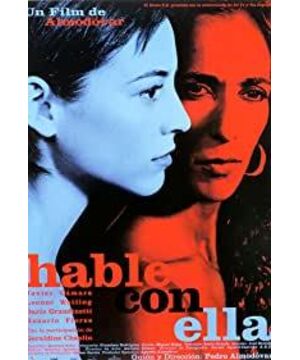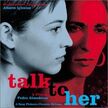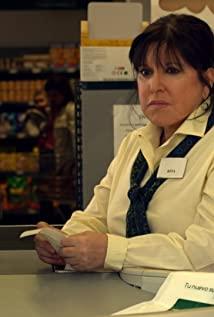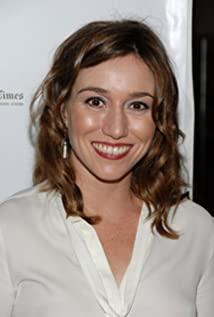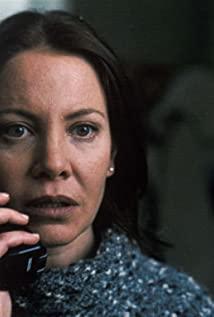The following is quoted from the book "Desire Films: Almodovar the Film Master on Film", a conversation between reporters and Almodovar:
Q: Similarly, when you use Pina-Bausch's two As a ballet, it's not a cultural reference because it has become the language of your film itself.
Answer: Exactly. In this case, the film has a certain rhythm in my eyes, and ultimately a certain musical language; I don't know how to explain it. All in all, this way of opening and closing with music is perfect.
Q: You're friends with Pina Bausch, like Caetana Belloso who sings "The Cooing Pigeon" in "Tell Her". Does doing this connect your life to the movie in an indirect way?
Answer: No. Asking friends for help is just to facilitate what I'm trying to do in this video. The work of Pina and Caetana has come up three times, but I wouldn't have invited them if they didn't mean a lot to me. Those moments have to be memorable because Marco wept in front of Pina's ballet the way he listened to Caetana, so I think people understand why. The reason I use these techniques in the film is that I am the first to cry. I also cried at the opening of "Café Mueller", like when I first heard Caetana sing "The Cooing Pigeon." The song is so emotional and so memorable that it borders on gross, so that it doesn't feel like the familiar version at all.
Q: "Tell Her" ends with Pina Bosch's ballet "The Trench." In Adam's garden, Alicia and Marco are dancing, the first happy couple "created" in the film. This Marco has to kill a snake in his ex-girlfriend Lydia's house. With these elements, are you trying to give the story a biblical vibe?
A: No, but I like this explanation. Indeed, Pina-Bausch danced like a true paradise, and the couple who danced on stage were as flawless as the couple that Aricia and Marco would form. When the film ends, people feel that everything has just begun in nature. I wanted to create a horror-related passion through the snake, a swimming snake, and use it to illustrate the mysterious character of Marco. The mystery of a man crying because he just killed a snake, not because of pain or fear, but because he's not in danger. Anyhow, the plausible explanation is that Marco lived with a woman who was afraid of snakes, and the woman left him. I think this is the best way to get nostalgic. That is, the absence of the missing person. That's why people associate me with Marko. I admit that the relationship gave him this pain and difficulty in healing. He had been missing this pain for years. But at his ex-wife's wedding, Marko didn't cry. It means that he no longer loves her. Instead, Lydia cried, thinking of the bullfighter she loved. There is a certain code throughout the film: the one who speaks is the one she loves, and the one who cries is also the one she loves. Benino asks Marco to speak to Lydia, but he can't say it. When he saw her in hospital, she was "dead". So when he saw Alicia again the same day he was in the hospital, he changed a lot. Take the initiative to speak to her. It's a sign of their love.
Q: "Café Mueller" is another Pina Bosch show that opens "Tell Her" to a dark, lonely and lost world. Couldn't this show also be included in "Bad Education"?
A: This ballet has more to do with Talk to Her for me, it demands a kind of mental gymnastics, so I simply can't port it to Bad Education as a reading. This sleepy woman is an exaggerated representation of the two women living on the edge of hell in the film. And the man who helped the woman put the chair in front of her to prevent her from falling is also a perfect example of both men in the film trying to help the two women to live comfortably despite their own I don't know what a comfortable day is. Using this ballet as the film's opening is an extremely linear way of telling the story, because everything is about what happens afterward. Like "Shrunk Lover", it is also a way of not expressing other pictures.
Q: On the basis of this ballet, maybe one can find a word to describe these two films: Chaos. The interweaving of life and death, past and present.
A: Yes, abstractly. This confusion is present in both films, and speaking of chaos can also summarise them. Café Mueller is indeed a ballet full of mystery.
This is copied for convenience only. But seeing Pina's dance for the first time was deeply touched. Before Pina Bausch's lover, Pina Bausch's lover, Rove Bozik, died of leukemia (1980), the stage designer for "Coffee Müller" was the one who was busy and neurotic throughout the dance in the direction of the dancer's movement. The role of pushing the table and pulling down the chair has always been played by Bozik himself.
In the 27 years after his death, Bausch still repeats this dance, and he doesn't know if it can really alleviate her fear and sadness. And she herself died of lung cancer in Wupatal, Germany on June 30, 2009, at the age of 68.
The following quote from Péter Esterházy quotes Peter Nádas:
She is a philosopher of the body. Those who discuss the body are discussing death; those who discuss death are dissolving death in the discussion.
This has always been a hopeless, but delightful science.
View more about Talk to Her reviews


